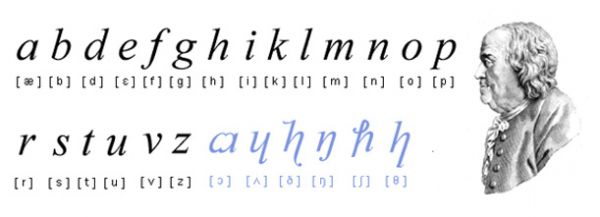
Benjamin Franklin, along with advocating for the turkey at the US national symbol, writing an almanac, experimenting with electricity, inventing bifocals, and helping to found the United States, also proposed a new, simplified alphabet. Franklin came up with it in 1768, and Noah Webster published it in 1789. He dropped some letters, came up with new ones for common phonemes, and assigned only one sound for each letter.
Franklin was confident that his new alphabet would easier to learn and, once learned, would drastically reduce bad spelling. He believed any difficulty in implementing a new alphabet would ultimately be overcome by its logic and simplicity. However, biographer Walter Isaacson has written that the alphabet “took his passion for social improvement to radical extremes.” But in the heady days after the Revolution, a national language seemed like a natural development for a new country. Franklin’s proposal found little support, even with those to whom he was closest. He did, however, manage to convert Webster, the pioneer of spelling reform.But it didn't catch on. Would you want to bother learning an entirely new alphabet and way of spelling after you'd spent years learning it the traditional way? Read about how Franklin's alphabet was constructed at Design Decoded.

No comments:
Post a Comment